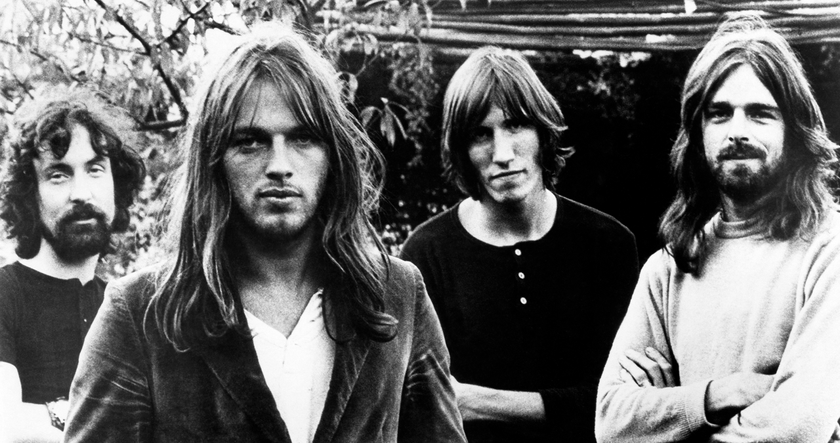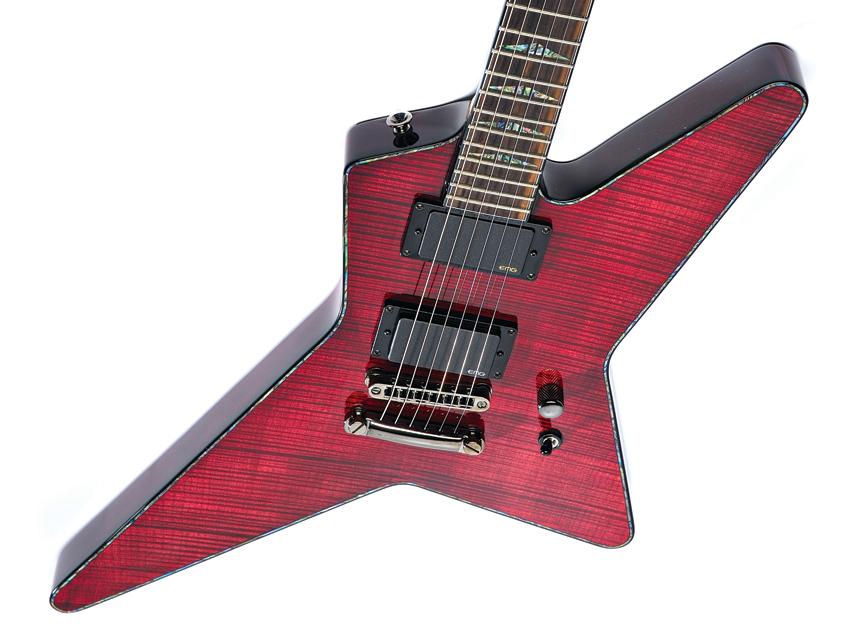MusicRadar Verdict
This is for the flamboyant among you. Are you going to live your life a chicken, or strut like a peacock?
Pros
- +
Red-hot lead and crunch tones; flashy looks…
Cons
- -
…that will put some off; sonically limited.
MusicRadar's got your back

Charvel Desolation DST-1 ST

Charvel Desolation DST-1 ST
Charvel's Desolation series comes in a variety of shapes. There's the Soloist for which the company is famous, a single cutaway Les Paul-style model, an elegant and curvy double cutaway, and a cool Surfcaster that's like a vintage pawn shop oddity that has been beefed up for metal.
But the star-shaped Desolation is the most aesthetically bold. Beholden to '80s nostalgia for a commercial mandate, the Desolation is ample compensation for the non-existence of hoverboards and self-tying shoelaces, with playability that puts some serious hemi and demi to your semi-quavers.
"In the bridge position, the EMG 81 is bright, harmonically responsive, and a little shrill in clean tones, but absolutely pulse-quickeningly hot when handling leads and high-gain crunch."
Typically Charvel, the build quality is such that, even though playing in a seated position is slightly compromised by the Desolation's lower wing, everything is geared for a comfortable speedy ride across the fretboard. Its slimline satin neck is equal to the lithe alternatives offered by Ibanez and LTD.
The compound radius fretboard offers safe passage to the most ambitious lead player, with fat jumbo frets rewarding all those who stayed behind after guitar class to ask their tutor for extra-curricular instruction in Malmsteen-esque arpeggios.
Sounds
There's no tone knob, but given that most players let their tone controls gather dust, is that such an issue? Well, kind of: it means the Desolation has effectively three tones (without, say, rolling back the volume for more subtle crunch).
In the bridge position, the EMG 81 is bright, harmonically responsive, and a little shrill in clean tones, but absolutely pulse-quickeningly hot when handling leads and high-gain crunch. The mid-way position engages both the bridge's 81 and the neck's 85, and offers a happy medium for when you need shimmering cleans with a more low-end resonance.
With an EMG 85 billeted at the neck, it performs admirably for soloing in what that wise old sage Ozzy Osbourne likes to call 'the cow tone'. The Desolation's lead voice in the neck pickup certainly rounds out and tidies up intricate shred solos, letting clumsy players off the hook - the bridge pickup just throws every mistake out there when you've got the gain cranked hard.
But hey, let's not forget that power is what made you choose the Desolation in the first place. The through-neck construction and solid mahogany makes for predictably great sustain, and while the maple top and Abalam (laminated abalone shell) inlays aren't for everyone, you could always order the black finish.
Jonathan Horsley has been writing about guitars and guitar culture since 2005, playing them since 1990, and regularly contributes to MusicRadar, Total Guitar and Guitar World. He uses Jazz III nylon picks, 10s during the week, 9s at the weekend, and shamefully still struggles with rhythm figure one of Van Halen’s Panama.

“I’ve often wondered if it was the Devil grinning up at me, or God smiling down on me. I still haven’t figured out who had the final say”: How a feat of spontaneous creativity resulted in one of Pink Floyd’s most majestic moments

“It's transparent when not in operation, crisp when looping, and handles high-gain and complex audio sources with ease”: TC Electronic Ditto 2 Looper review

“Instead of pairing a new booster inside this new pedal, think of it as changing lanes inside the pedal”: Mythos and That Pedal Show team up for the Argo Boost Deluxe – an octave fuzz with a switchable boost









